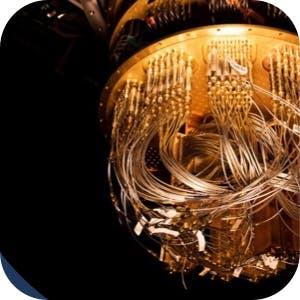- Home
- All updates
- EDGE Insights
- Industries
- Company Search
- My Watchlists (Beta)
All updates
Chinese research teams demonstrate new quantum achievements
Pimax announces compact Dream Air VR headset for USD 1,900
HuLoop raises Series A funding from Mighty Capital
Fiserv to acquire Payfare for undisclosed sum to enhance embedded finance solutions
Fiserv to acquire Payfare for undisclosed sum to enhance embedded finance solutions
Meight raises EUR 3.4 million in funding led by Cusp Capital
Desktop Metal sues Nano Dimension over merger compliance
Nexa3D scales back operations amid financial crisis
Fraction AI raises USD 6 million in pre-seed funding to scale hybrid data labeling
Rocket Lab launches sixth Synspective radar satellite as part of ongoing partnership
EHang partners with Changan Automobile to develop eVTOL aircraft for personal transportation

Quantum Computing
Chinese research teams demonstrate new quantum achievements
-
Research teams from the Chinese Academy of Sciences (CAS) Center for Excellence in Quantum Information and Quantum Physics (CEQIQP) and the University of Science and Technology of China (USTC) have announced a few achievements in quantum hardware and communication.
-
The most recent announcement came from a research team from the CAS CEQIQP that has successfully designed a programmable superconducting quantum processor with 66 qubits, named Zu Chongzhi-2. It is reportedly ten million times faster than the current fastest supercomputer and is capable of solving calculations that are one million times more complex than the one solved by Google’s Sycamore in 2019.
-
Last week, a USTC research team established the world’s first integrated quantum communication network combining more than 700 optical fibers over a total distance of 4,600 kilometers for users across the country.
-
Similar announcements have also been made in the past. In May 2021, a research team from USTC designed Zu Chongzhi (with 62 qubits) which reportedly solved a complex calculation in just over an hour which would otherwise take more than eight years to complete using the most powerful classical computer.
-
Simultaneously, a research team from USTC has designed a light-based (photonic) quantum computer prototype with 113 photons and 144 modes, called the Jiuzhang-2. It is reportedly tens of billions of times faster than a supercomputer in solving specific problems. This makes China the first country to achieve a quantum computational advantage in two major technical routes.
Contact us
By using this site, you agree to allow SPEEDA Edge and our partners to use cookies for analytics and personalization. Visit our privacy policy for more information about our data collection practices.